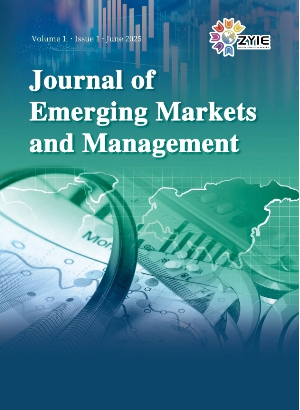Multidimensional Determinants of Tunisian Migration Flows: An Integrated Econometric Analysis
DOI:
https://doi.org/10.63385/jemm.v1i1.86Keywords:
Tunisian migration flows, diaspora networks, migration policy, panel data regressionAbstract
Tunisian migration patterns reveal a complex interplay between inherited colonial ties, contemporary economic disparities, and evolving institutional frameworks that challenges traditional migration theory. This study examines the interaction between economic, socio-cultural, and institutional factors influencing Tunisian migration, addressing an analytical gap beyond the traditional economic lens. Using a two-way fixed-effects panel regression model controlling for country and year fixed effects, with robust standard errors clustered at the country level, we analyze data from 23 countries over the period 2012–2022 to examine the impact of GDP per capita, unemployment, diaspora networks, linguistic proximity, and bilateral agreements on migration flows. Our analysis reveals that despite the primacy of economic incentives in driving migration decisions, cultural legacies exert an unexpectedly strong influence that reshapes our understanding of Mediterranean migration dynamics. While GDP per capita accounts for 65% of the variation in migration flows, cultural factors demonstrate considerable influence with diaspora networks contributing a 30% increase and common language proximity yielding a 45% increase. In contrast, formal migration agreements show only a marginal effect of 25% (p = 0.06). These findings suggest that effective migration policies should strategically leverage diaspora networks and linguistic proximity while recognizing the limited impact of formal bilateral agreements compared to economic and cultural determinants in shaping migration patterns.
Downloads
License
Copyright (c) 2025 Zyed Achour

This work is licensed under a Creative Commons Attribution 4.0 International License.



 PDF
PDF
